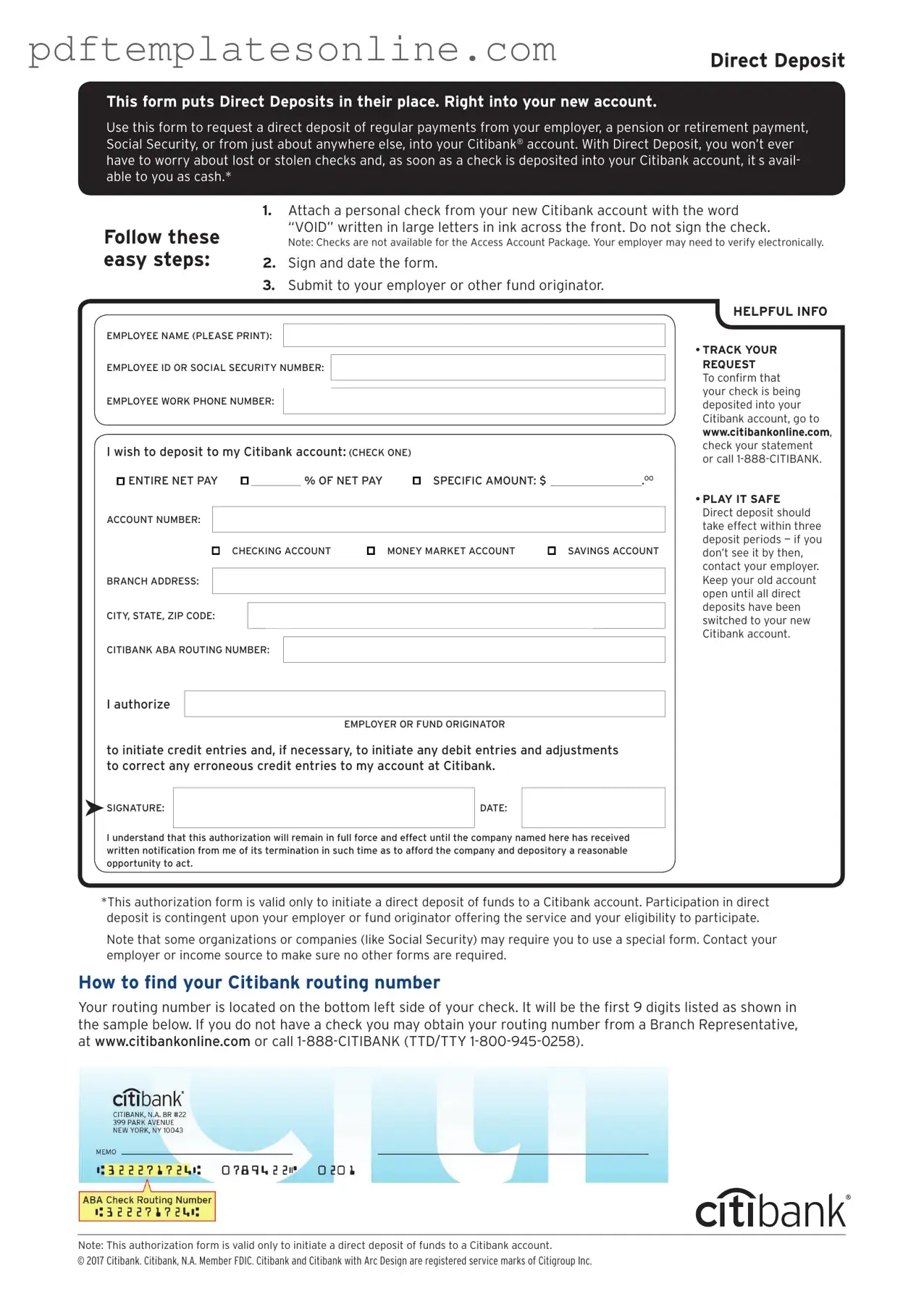Filling out the Citibank Direct Deposit form can seem straightforward, but many people make common mistakes that can delay their payments. One major error is providing incorrect account numbers. Each bank account has a unique number, and even a single digit off can lead to funds being deposited into the wrong account. Always double-check your account number against your bank statements.
Another frequent mistake is neglecting to sign the form. Without a signature, the bank cannot process the request. It's a simple step, but it's often overlooked. Make sure to sign the form in the designated area before submitting it.
People also sometimes forget to include their routing number. The routing number is essential for directing funds to the correct bank. This number can usually be found on your checks or by contacting your bank. Ensure that you enter it correctly to avoid any issues.
In some cases, individuals fail to specify the type of account they are using. Whether it’s a checking or savings account, this detail is crucial. If you don’t indicate the account type, it may lead to confusion and delays in processing your deposit.
Another common error is submitting the form without verifying the information. It’s easy to rush through the process, but taking a moment to review your entries can save a lot of hassle. Look for typos or missing information before sending it off.
Finally, some people forget to keep a copy of the completed form for their records. Having a copy can be helpful if there are any issues later on. It serves as proof of what you submitted and can assist in resolving any discrepancies that may arise.
